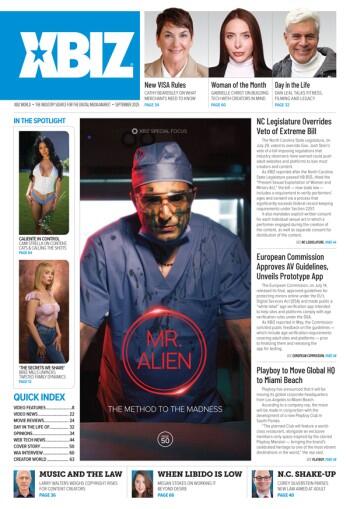Inclusivity. These days everyone is talking about it, striving for it and generally being aware of it in ways a lot of folks weren’t in the past. This is a fantastic thing! It is so important that companies — in the adult industry and beyond — create and promote their products in ways that speak to as many people as possible and exclude no one.
Unfortunately, in a busy retail setting, inclusivity can too easily be reduced to just another to-do list item, a buzzword used to appear socially aware rather than an important part of the fabric of a business.
As adult retailers, we are here to help — and the quest to be inclusive is a beautiful opportunity to celebrate belonging, respect differences and help everyone you serve.
With that in mind, today we’re going to take a good, hard look at inclusivity. We’ll talk about what it means, what it can look like and how to work towards it in your business.
So, what is inclusivity?
Inclusivity is about providing representation, opportunities and resources to all people. This often requires being especially aware of people or groups who might be marginalized or excluded based on race, physical or mental ability, sexual orientation, gender or financial status.
Some examples of inclusivity in adult retail: creating and/or selling products that are accessible and pleasurable for different body types, offering products at a range of price points to be inclusive of shoppers from all income brackets, and making sure that marketing materials, product descriptions, media collaborations and new releases don’t speak to only one kind of person or relationship.
Inclusivity in action
Lots of companies strive to create safer-feeling spaces where everybody feels welcome, but what does that look like? It means your company recognizes and celebrates the needs of all bodies, encourages sex-positive conversations, addresses questions and concerns, offers educational resources and, most importantly, helps shoppers live their best sex lives without being judged. Authentic inclusivity requires taking action rather than simply engaging in dialogue.
Ways your company can be more inclusive
The best way to approach inclusivity is with authenticity, openness and a sense of accountability and responsibility. It’s not just creating a product aimed at marginalized groups or issuing statements on social media. Authentic inclusivity involves aligning your brand’s words and actions in ways that make a difference, while listening to feedback and acknowledging mistakes or limitations. No one is perfect and making errors is part of the process; what matters most is taking responsibility and making changes where needed.
So, what are some concrete steps your company can take to foster inclusivity both internally and out in the world? Internally, companies can work to broaden representation within their own teams: look to see which voices are missing from your meetings and make it a point to recruit and hire employees who can fill those gaps. Ask for consultations and feedback, and pay these professionals for their time and perspective. It is also important to foster a culture of inclusivity within your company. For example, provide staff with training opportunities to help them identify and unlearn unconscious bias.
Being inclusive involves both learning and unlearning. You need to be willing to educate yourself about people who are different from you. Consider exploring media and books on topics that challenge your thinking and perspective. If you find this kind of effort to be burdensome, try thinking of it instead as an opportunity to take individual action toward a better future that reflects both your own and your company’s values.
When it comes to engaging with customers and other companies, it’s about consistency. Not just slapping rainbows on everything every June, but taking time all year long to ensure your products, marketing materials, sales points and discussions, and social media accounts represent multiple identities, groups, appearances, relationships and lifestyles without centering on just one or two. It can also include donating to groups that work towards equity and inclusion, sharing powerful stories about community members who are making a real difference, and making sure you actively learn about groups you are marketing to from members of those groups.
Remember that as you strive for inclusivity, you may still mess up sometimes. If you do, just be willing to learn and do better in the future. This approach will always be more successful than announcing you are inclusive but then getting upset by criticism.
As members of the adult retailer industry, we are here to help — and the quest to be inclusive is a beautiful opportunity to celebrate belonging, respect differences and help everyone you serve live without compromise as their authentic selves. You can’t get more helpful than that!
Verna Meng is the co-founder and CEO of Blush, and the recipient of the 2018 International Women’s Entrepreneurial Challenge Foundation Award.







